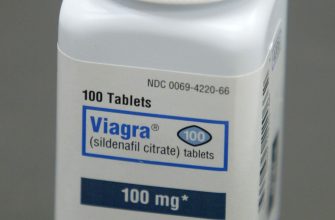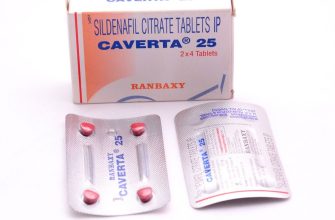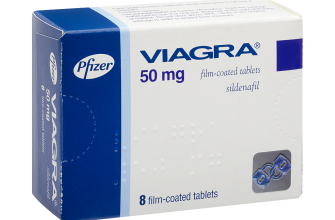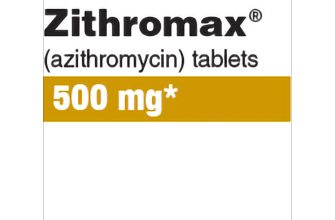Consider incorporating alendronate into your treatment plan if you are facing osteoporosis. This medication significantly reduces the risk of fractures in individuals with this condition by inhibiting bone resorption. Clinical studies show that alendronate can increase bone mineral density and is particularly useful for postmenopausal women at risk of osteoporosis.
Begin by consulting your healthcare provider to determine the appropriate dosage for your specific needs. Typically, alendronate is prescribed at a standard dose of 10 mg daily or 70 mg weekly. Ensure that you take it on an empty stomach with a full glass of water to maximize absorption. Standing or sitting upright for at least 30 minutes after taking the medication helps to prevent esophageal irritation.
Regular follow-ups with your doctor are essential to monitor the effectiveness of alendronate. These check-ups provide the opportunity to evaluate bone density through scans and adjust the dosage if necessary. Maintaining a balanced diet rich in calcium and vitamin D will support your treatment and contribute to stronger bones.
In addition to medication, engaging in weight-bearing exercises can enhance bone health. Activities such as walking, dancing, and weight training are beneficial and help build bone mass. Combining alendronate with these lifestyle changes offers a comprehensive approach to managing osteoporosis effectively.
- Alendronate for Osteoporosis
- Understanding Osteoporosis and Its Risks
- Identifying Symptoms and Consequences
- Preventive Measures
- The Mechanism of Action of Alendronate
- Appropriate Dosage and Administration of Alendronate
- Administration Guidelines
- Missed Dose
- Potential Side Effects and Safety Considerations
- Rare but Serious Reactions
- Kidney Function and Other Considerations
- Effectiveness of Alendronate in Clinical Studies
Alendronate for Osteoporosis
Alendronate significantly reduces the risk of fractures in individuals diagnosed with osteoporosis. For adults, the typical dosage is 10 mg taken daily or 70 mg weekly, depending on the severity of bone loss. Adhering to this regimen helps maintain bone density, leading to improved skeletal strength.
Patients should take Alendronate first thing in the morning with a full glass of water. It’s important to remain upright for at least 30 minutes after taking the medication to enhance absorption and minimize the risk of esophageal irritation.
Regular assessment of bone mineral density (BMD) through dual-energy X-ray absorptiometry (DXA) scans is recommended to monitor treatment efficacy. Patients may benefit from periodic reevaluation of their therapy every two to three years, based on individual risk factors and BMD results.
Combining Alendronate treatment with adequate calcium and vitamin D intake enhances overall bone health. The recommended calcium intake is about 1,200 mg per day for most adults, while vitamin D aids in calcium absorption.
While Alendronate generally has a favorable safety profile, side effects may include gastrointestinal discomfort or musculoskeletal pain. Patients should communicate any adverse reactions to their healthcare provider to evaluate the ongoing need for medication.
Routine follow-up visits with healthcare professionals allow for adjustments in management plans as needed. Staying informed about one’s bone health and adhering to prescribed treatments can contribute positively to long-term outcomes in osteoporosis management.
Understanding Osteoporosis and Its Risks
To manage osteoporosis effectively, recognize its significant risk factors. Aging, especially post-menopausal women, increases susceptibility due to hormonal changes. Genetic predisposition also plays a critical role; a family history of fractures can heighten your risk. Low body weight and a diet deficient in calcium and vitamin D contribute to bone density loss. Lifestyle choices, such as smoking and excessive alcohol consumption, further amplify dangers.
Identifying Symptoms and Consequences
Many osteoporosis patients remain asymptomatic until a fracture occurs. Watch for signs like back pain, posture changes, or loss of height. Fractures can lead to severe complications, including chronic pain and mobility issues. Addressing these symptoms promptly improves outcomes and enhances quality of life.
Preventive Measures
Engage in weight-bearing exercises to strengthen bones. Ensure adequate calcium and vitamin D intake through diet or supplements. Regular health check-ups help monitor bone health. Speak to healthcare providers about bone density testing and potential medications like alendronate, which can help mitigate risks associated with osteoporosis. Taking proactive steps helps reduce the chances of fractures and supports long-term wellness.
The Mechanism of Action of Alendronate
Alendronate acts primarily by inhibiting osteoclast-mediated bone resorption. Osteoclasts are cells responsible for breaking down bone tissue. When Alendronate is absorbed into the bone, it binds to hydroxyapatite, the mineral component of bone. This binding reduces osteoclast activity and promotes apoptosis, or programmed cell death, of these cells. As a result, the rate of bone resorption decreases.
This decrease in osteoclast activity leads to a net gain in bone density. In addition, Alendronate modulates signaling pathways that control osteoclast function. It interferes with the mevalonate pathway, which is crucial for osteoclast survival and function. By targeting this pathway, Alendronate diminishes the osteoclasts’ ability to resorb bone, which directly contributes to increased bone mass over time.
Clinical studies show that Alendronate effectively increases bone mineral density at various skeletal sites, including the spine and hip. This enhancement reduces the risk of fractures significantly. Regular dosing allows for sustained action, leading to long-term skeletal benefits.
Combining Alendronate with adequate calcium and vitamin D intake can further enhance its effects. Patients should follow a daily routine ensuring sufficient intake of these nutrients to maximize the medication’s impact on bone health.
Appropriate Dosage and Administration of Alendronate
For the treatment of osteoporosis, the typical dosage of Alendronate is 10 mg once daily or 70 mg once weekly. Accurate timing and method of administration enhance the medication’s effectiveness and reduce the risk of esophageal irritation.
Administration Guidelines
- Take Alendronate first thing in the morning, at least 30 minutes before the first food or drink of the day.
- Swallow the tablet whole with a full glass of plain water (6-8 ounces).
- Avoid lying down for at least 30 minutes after taking the medication to prevent esophageal irritation.
- Do not take Alendronate with mineral water, coffee, tea, or juice, as these may interact with the absorption.
Missed Dose
- If a daily dose is missed, take it as soon as remembered, unless it’s within 30 minutes of the next dose. In that case, skip the missed dose and resume the regular schedule.
- If a weekly dose is missed, take it the morning after you remember. Do not take two doses on the same day.
Regular compliance with the dosing schedule is crucial for optimal treatment outcomes. Consult a healthcare provider to adjust the dosage based on individual conditions.
Potential Side Effects and Safety Considerations
Patients using alendronate should be aware of potential side effects to ensure safety during treatment. Common adverse effects include gastrointestinal issues such as abdominal pain, nausea, and esophageal irritation. Taking the medication with a full glass of water and remaining upright for at least 30 minutes post-ingestion can help mitigate these problems.
Rare but Serious Reactions
Some users may experience rare but serious side effects, including osteonecrosis of the jaw and atypical femur fractures. Maintaining good oral hygiene and addressing any dental issues before starting treatment can reduce the risk of jaw-related complications. Monitoring for unusual thigh or groin pain is also advisable, as it may indicate a potential fracture.
Kidney Function and Other Considerations
Individuals with existing kidney issues should consult a healthcare provider prior to using alendronate. Regular kidney function tests help ensure safe usage. Additionally, those on long-term treatment should have periodic evaluations to assess the need for continued therapy.
Always discuss any new symptoms or concerns with your healthcare professional to ensure the best outcomes while using alendronate.
Effectiveness of Alendronate in Clinical Studies
Clinical studies demonstrate that Alendronate significantly reduces the risk of fractures in patients with osteoporosis. A pivotal trial, the Fracture Intervention Trial (FIT), showed a 50% reduction in the risk of hip fractures and a 45% reduction in vertebral fractures among postmenopausal women over a three-year period.
In a large meta-analysis, researchers found that Alendronate led to a 30% decrease in the rate of non-vertebral fractures. This analysis highlighted its role in enhancing bone mineral density (BMD) at various skeletal sites. Measurements indicated an increase in BMD of approximately 6-8% in the lumbar spine and 2-5% in the hip after three years of treatment.
Long-term studies continue to support its safety and efficacy. Data extends the observation of reduced fracture incidence to over ten years, providing reassurance regarding sustained benefits in fracture risk reduction. Additionally, Alendronate has shown favorable outcomes for patients receiving glucocorticoids, decreasing the risk of steroid-induced osteoporosis.
Patient compliance remains crucial in optimizing the benefits of Alendronate. Studies indicate that adherence to the once-weekly dosage regimen improves long-term outcomes. Regular monitoring of BMD and fracture history can further guide tailored treatment plans, optimizing overall patient management.
Alendronate’s cost-effectiveness, combined with its demonstrated fracture risk reduction capabilities, positions it as a leading choice in osteoporosis treatment. Its benefits extend beyond the individual, contributing to reduced healthcare costs associated with fracture management.









